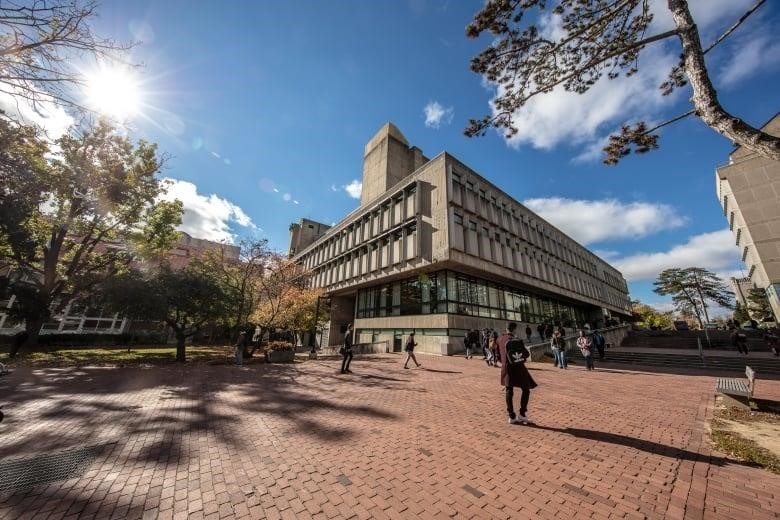
Scientists at the University of Guelph are questioning the old way of doing business in academic publishing
Terry Van Raay is a biologist who spends most of his time in the lab putting different foods through an artificial intestine. He does this to try to find out how gut health affects the nervous system.
But the associate professor of cellular biology at the University of Guelph in southern Ontario has grown frustrated with the business of academic publishing, just like many other scientists.
Van Raay said, “Publishers charge us to put our work out there, and then they ask us to do the peer review for other researchers’ articles for free.””Really, there are only five publishers who own almost all the magazines, and they make billions of dollars. It has to be different.”
Academic publishing is a very different kind of business. Researchers usually give their studies for free or pay to publish them. The drafts of these studies are then reviewed by other experts who don’t get paid to make sure the content is original and academically sound.
After reviewers suggest changes and agree on a good version, the final product is published in an academic journal that makes money, and then university libraries buy it back.
The head of a group that represents research institutions said that the average Canadian university library now spends three-quarters of its money on new materials on journal subscriptions.
Prices to read studies in peer-reviewed journals, which are paid for by universities and heavily subsidized by taxpayers, have gone up by more than 400% over the past 20 years, according to a 2021 study that used data from Statistics Canada. Four experts said that is the most recent national data on how prices have gone up over time.
These rising costs affect a lot of people outside of the ivory tower. Academic studies are the main way that new information gets into the public domain. This is true for everything from better cancer treatments to debates about foreign policy to tracking the progress of artificial intelligence.
“On a basic level, this is taxpayers’ money that is being extracted from the higher education system,” Philippe Mongeon, an associate professor of information management at Dalhousie University in Halifax, said of the fees universities pay for journal access.
“Tuition fees … will be higher because we have to pay the publisher. There are less resources for research and social programs, as the publishers are extracting it, and that makes it harder to solve societal problems, to improve the lives of Canadians.”
Known as the “big five publishers” — Elsevier, Springer, Wiley, Taylor & Francis and Sage — control more than half of the global market for scholarly journals, according to a 2021 study (which was published by Wiley).
Officials with those companies say they are providing a crucial service by storing and advancing knowledge, and many say they are working with libraries to keep costs down in a business that has been altered by digitization and other trends.

The typical Canadian university library spends about 75 per cent of its acquisitions budget for new material on journal subscriptions, said Susan Haigh, executive director of the Canadian Association of Research Libraries (CARL), an umbrella group representing this country’s largest university libraries.
Her group’s members spent more than $90 million on subscriptions to the largest journal packages in 2019, she said of her latest available data.
“The fundamental problem is this: content comes to those publishers ready-made on the backs of research and research funding,” Haigh said. “For the libraries to then have to pay a lot of money to [publishers] is unfortunate.”
Push back from scientists, librarie
Van Raay and his colleague, Prof. Andreas Heyland, are part of a growing trend of researchers trying to wrest control over information from the big publishing firms.
Their project, Peer Premier, is the first-ever professional peer review service intended to be independent of any journal or publisher, according to the University of Guelph.
WATCH | Half of world’s species in decline, study suggests:
To use the service, an author pays $1,100 to the organization, in contrast to more than $10,000 to publish in some top journals, Heyland said.
Of that money, $300 goes to each of the article’s three independent reviewers and the remaining $200 is used for project administration. Researchers who submit get fulsome comments from the reviewers and leave with an edited, peer-reviewed manuscript that can be submitted elseware for publication, he added.
Launched in 2021, the initiative is still tiny; undermining the power of the big publishers is “not something that happens quickly,” Heyland said. Peer Premier is not an academic journal onto itself, he added, it’s a way to remove control over the peer review process from publishers.
‘Entrenched in our ways
Academics who aren’t involved with the project say it’s one of several interesting initiatives designed to challenge the dominance of the big five.
But two outside experts said they aren’t confident these types of programs will have much success, given how the broader academic world is organized.

“Libraries are having a hard time navigating that space between a publisher asking for more money and a community that doesn’t want to lose access to this information,” said Mongeon from Dalhousie University.
The broader academic system disincentivizes researchers from using a project such as Peer Premier and then publishing the peer-reviewed study on a university website or a similar non-profit platform, he added.
“You get a reputation by publishing in top journals,” he said. “If you don’t publish in those journals, it hurts your career.” This makes it harder for university-owned journals or other kinds of peer review processes to gain credibility.
When quality independent journals do pop up, it’s common for big publishers to simply buy them, Mongeon added, noting these companies can boast profit margins of 40 per cent on billions in revenue. “It’s one of the most profitable industries out there.”

Agnes Grudniewicz, an associate professor at the University of Ottawa, studies how hospitals can adopt new cancer research in practice. It’s work largely financed by taxpayers through research grants.
Ideally, she said she would like to publish her findings in smaller outlets, bypassing the big publishers, especially given their costs — plus their “copy editing is not always great.”
If she didn’t publish in the big journals, she said she would have struggled to get tenure and research money, as citations in prominent outlets still play a big role in those decisions.
“The academy is a hard place to push back,” Grudniewicz said. “We are entrenched in our ways.”
Changing the system would require universities, regulators and funders coming together to reevaluate how academic promotions are granted and how funding is dispersed, she added.
Publishers say they’re safeguarding knowledg
The publishing houses, for their part, say they are providing a crucial service in curating peer-reviewed information, making sure junky science doesn’t enter top journals. And some say they are trying to keep costs down.
All of the big five publishers denied interview requests, but most responded to written questions.
“We absolutely recognize that library budgets are strained so we work closely with each of our customer institutions to offer them the right, sustainable solutions to support their research goals,” a spokesperson for Elsevier, a company that has been publishing journals for more than 140 years, said via email.
“Elsevier’s average list prices for subscription articles have remained flat over the last 10 years, compared to average increases of around six per cent per annum by other publishers.”
A spokesperson for Springer Nature said the company has more than 2,000 full-time in house editors and partnerships around the world so “our community can publish high quality research for the public to use as quickly as possible.”

Springer Nature said it supports more than 2.5 million authors publishing open access material — which is free to read for the general public but typically expensive for the writer. It aims to make half of its research free to access for readers by the end of 2024, the spokesperson said via email.
“The research publishing landscape is in a state of flux — from print-based to digital, and from subscription to open access publishing,” she added. “A successful transition requires investment in systems, technology and resources to support our readers and authors on this journey.”
Caroline Sutton, CEO of STM Association, a trade industry group representing academic publishers, said author satisfaction with the publishing houses, “is growing. But this is a truth that’s been hard to communicate in recent years.”
The business also has long-term costs that many critics don’t consider, she added via email.
“Publishers themselves remain responsible for maintaining the permanent record (the final published article) — in perpetuity,” Sutton said. “And this is incredibly important, considering that science and discovery are iterative and built on previous works.”
